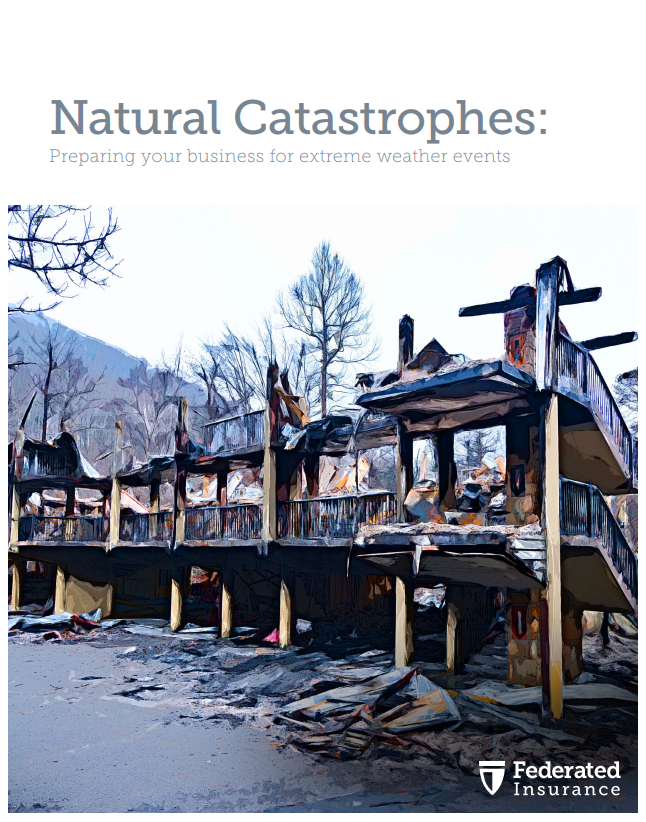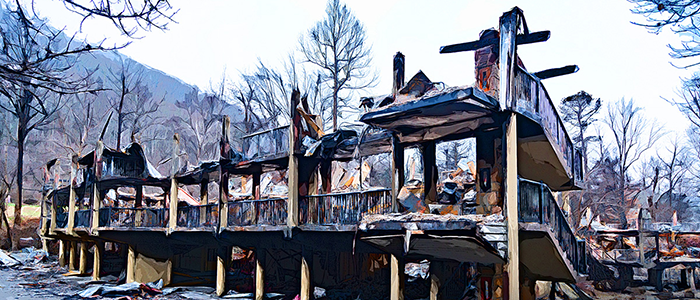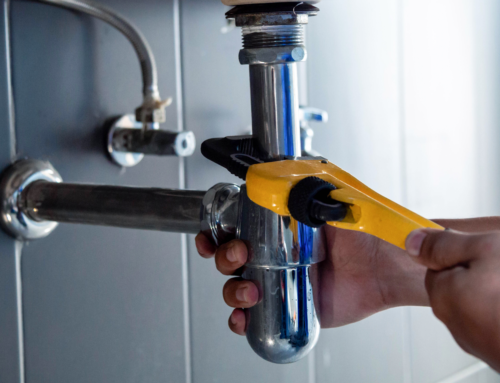Extreme weather and natural catastrophes cause billions of dollars of damage in Canada every year. The costs are high: Insured damage from floods, rain, snow, and windstorms reached $1.3 billion in 2019, according to the Insurance Bureau of Canada (IBC).
That number is expected to increase with the impacts of climate change, and no business or industry is immune.
[Download our whitepaper on preparing your business for extreme weather events]
The impacts of climate change
We’re already seeing the impacts of climate change through extreme weather events and natural catastrophes, and the damage and destruction they can cause.
In Canada, some of the key challenges that businesses will face due to climate change include disrupted construction or logistics, unavailable resources or raw materials, and increased or unpredictable energy costs, according to a brief by CPA Canada.
In order to help combat these challenges, architects and builders will need to start thinking about where they’re building – whether it’s in the middle of a floodplain or in an area that gets regular snow squalls every winter.
“We need to look at our urban footprint and what we need to do to protect those buildings going forward,” says Fred Muldowney-Brooks, who leads Federated Insurance’s risk services program nationally.
It’s also important to rethink construction and build with resiliency in mind. For example, wood is flexible and is ideal as a building material for construction in Vancouver, since it can better withstand earthquakes. After construction, there are still steps business owners and residents can take including staying abreast of the weather and take proactive action when necessary.
Extreme weather
Some of the top natural catastrophes that will be exacerbated by climate change include wildfires, floods, ice, snow and winter storms, and windstorms and tornadoes.
Wildfires
Over the past 50 years, the total area burned by wildfires has more than doubled, and the number and average severity of large fires has increased, according to the IIC’s Climate Risk report. An increase in hot, dry, and windy conditions in forested zones could result in an increase of extreme fire weather conditions, the number of fire spread days, and the overall length of the fire season.
Typically, wildfires occur from early spring through to fall and occur just about everywhere in Canada. Businesses are at highest risk if they have wildland within 30 metres of their building, according to the Institute for Catastrophic Loss Reduction (ICLR).
Natural Resources Canada offers a Canadian Wildland Fire Information System with daily fire weather and fire behaviour maps, as well as hot spot maps, throughout the duration of the forest fire season.
There are also some preventative steps business owners can take, including having fire extinguishers and smoke alarms installed on the property, and training employees on how to properly handle and operate equipment that may cause fires or serious injury. Other measures include:
- Regularly clearing debris
- Providing a safe smoking area
- Upgrading your infrastructure
Floods
Canada is surrounded by three oceans and has more lakes than any other country in the world, including four of the Great Lakes, so it’s no surprise the country is prone to flooding. Flooding can occur at any time of the year, and climate change is likely to increase flooding.
More intense rainfall will increase urban flood risks, and coastal flooding is expected to increase as sea level rises, according to the CCCR 2019 report. Increased frequency and severity of extreme rainfall could occasionally overwhelm aging sewer systems and flood basements, according to the IIC.
It’s important to understand the potential for flooding — such as river flooding, coastal flooding, surface water flooding, and sewer flooding — and the impact flooding can have on your operations. Flood warnings can come from various sources; it’s helpful to designate a person in your organization to be responsible for monitoring reports from reliable sources and providing updates to senior management or the disaster planning team.
If your business is in a flood-risk area or a concrete jungle, ensure you do the following:
- Make sure that staff know what to do in case of a flood.
- Make a list of employees’ contact details in the event of an evacuation.
- Identify evacuation routes and organize emergency drills for staff.
Ice, snow, and winter storms
Canadians are no strangers to ice and snowstorms. Even still, a big winter storm could knock out electricity, heat, and communications for hours, even days, as evidenced by the devastating 2013 ice storm in central and eastern Canada. Climate change could make these winter storms more frequent and intense, since warmer air holds more moisture.
It’s best to be prepared for the worst-case scenario, and there are a few points to consider:
- Make sure you have emergency power, such as backup generators, available, as well as a supply of flashlights and batteries to ensure employees can continue to move safely through the workspace.
- Perform regular maintenance before, during, and after the winter season.
- Seal all windows, doors, and wall cracks on exterior walls with caulk or insulation, and insulate and seal partition walls, vents, plumbing stacks, and electric and mechanical chases.
Windstorms and tornadoes
Canada experiences all types of extreme wind events, according to the ICLR. Violent winds are often a component of natural catastrophes, causing power outages and damage to roofs and properties — and turning loose items into dangerous projectiles. Once again, climate change is expected to increase the frequency and intensity of severe thunderstorms that come with severe wind, hail, and tornadoes, according to the IIC report.
It’s important to keep up to date on upcoming weather events, including windstorms and tornadoes. You can also help reduce damage to your property by taking simple precautions.
- Inspect and repair loose or damaged building components such as siding, shingles, roofing and brickwork, and remove trees and branches that could fall on the roof or on power lines.
- Retrofit your property, including bracing and strapping the roof; adding fasteners, ties and reinforcements; and making entry doors more wind resistant.
Business continuity and disaster planning
Disasters can happen anywhere, without warning, which is why your business needs a plan. Business continuity planning is about preparing your business for the worst, including unforeseen natural catastrophes. First, do a business risk analysis to understand your vulnerabilities. A significant part of your risk management program should be dedicated to ensuring business continuity and resumption of normal operations as quickly as possible.
This plan should answer some key questions, like: If you can’t immediately return to your business facility, where could you temporarily set up? Is your staff trained on the proper protocols during an emergency situation?
You should also determine how much a natural catastrophe could cost your business. Having insurance coverage is a central part of an effective business continuity strategy. If you already have insurance, take the time to know exactly what’s covered by your policy.
To learn more about business continuity planning, read our detailed guide, Open for Business: Business Continuity Planning Guide, which provides step-by-step instructions and helpful checklists.
This blog is provided for information only and is not a substitute for professional advice. We make no representations or warranties regarding the accuracy or completeness of the information and will not be responsible for any loss arising out of reliance on the information.






